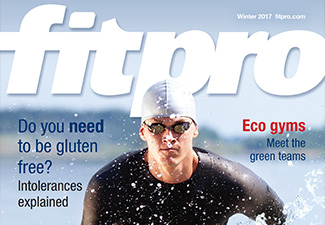Magazine References
Winter 2017

Editor’s corner
References
- https://yougov.co.uk/news/2016/09/27/quarter-british-swimmers-dont-think-they-could-ach/, accessed on 27 November 2017.
Research reviews
References
- Lear Bennie et al (2016), The descriptive epidemiology of total physical activity, muscle- strengthening exercises and sedentary behaviour among Australian adults, BMC Public Health BMC series, 16:73.
- Ekblom-Bak (2014), The importance of non-exercise physical activity (NEPA) for cardiovascular health and longevity, British Journal of Sports Medicine, 48:233-238.
Children’s fitness
Recommended reading
- http://www.ukactive.com/home/more/10148/page/2/school-summer-holidays-driving-victorian-era-health-inequalities-among-children, accessed on 27 November 2017.
Triathlon training
References
- https://www.britishtriathlon.org/media/statistics, accessed on 27 November 2017.
Tread carefully
Reference
- https://www.virginmoneylondonmarathon.com/en-gb/news-media/latest-news/item/world-record-number-apply-for-2018-virgin-money-london-marathon/, accessed on 27 November 2017.
Tensegrity
References
- Ingber DE (2008), Tensegrity and Mechanotransduction, Journal of Bodywork and Movement Therapies, 12(3): 198-200.
- Myers TW (2011), Anatomy Trains, London: Urban & Fischer.
- Liberated Body website (2015), Dr Stephen Levin: Biotensegrity podcast, liberatedbody.com/podcast/stephen-levin-lbp-035, accessed on 27 November 2017.
- Braybrook S (2016), The Evolution of Biomechanics, DM Press.
Rowing to empower
References
- https://www.nhs.uk/conditions/cushings-syndrome/, accessed on 27 November 2017.
Client handout – Thinking about drinking
References
- Health and Social Care Information Centre (2015), Health Survey for England. Trend tables. [Online]. Available from www.hscic.gov.uk, accessed on 27 November 2017.
- Drink aware. [Online]. https://www.drinkaware.co.uk/alcohol-facts/alcohol-and-the-law/drink-driving-and-the-legal-alcohol-limit/, accessed on 27 November 2017.
- Alcohol. Balancing the risks and benefits. Nutrition Source. Harvard. [Online] https://www.hsph.harvard.edu/nutritionsource/alcohol-full-story/, accessed on 27 November 2017.
- Holmes M et al (2014), Association between alcohol and cardiovascular disease: Mendelian randomisation analysis based on individual participant data, BMJ, 349.
- Britton A et al (2016), Underestimating the alcohol content of a glass of wine: the implications for estimates of mortality risk. Alcohol, 51(5): 609-14.
- Churchill S et al (2016), Persuading people to drink less alcohol: the role of message framing, temporal focus and autonomy, Alcohol, 51(6): 727-733.
- Cao Y et al (2015), Light to moderate intake of alcohol, drinking patterns, and risk of cancer: results from two prospective US cohort studies, BMJ, 351.
- Bagnardi V et al (2015), Alcohol consumption and site specific cancer risk: a comprehensive dose- response meta-analysis, British Journal of Cancer, 112: 580-593.
- Baglietto L et al (2005), Does dietary folate intake modify effect of alcohol consumption on breast cancer risk? Prospective cohort study, BMJ, 331: 807.
- Van Reen et al (2016), Current alcohol use is associated with sleep patterns in first year college students, Sleep, 39(6): 1,321-6.
- Gee C (2006), Does alcohol stimulate appetite and energy intake? Br J Community Nurse, 11(7): 298-302.
- Booyse F et al (2007), Mechanism by which alcohol and wine polyphenols affect coronary heart disease risk, Ann Epidemiol., 17:S24-31.


